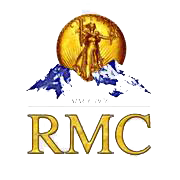To grade a coin means to evaluate it based on the amount of wear it has. The two most basic ways of describing a coin’s wear are uncirculated, meaning a coin that has no evidence of wear from circulation (used in everyday transactions), and circulated, meaning a coin that has some degree of wear (ranging from a barely-discernible rub to decades of wear that has virtually destroyed the coin’s design).
While there are established systems and processes for grading a coin, it is ultimately a subjective conclusion. One grading service may assign a coin at a higher or lower grade than another service based on the amount of wear a particular grader perceives.
A Brief History of Coin Grading
The Early Years
In the mid-19th century, coin collectors realized the necessity of defining the quality of coins in order to assess their values. A basic system of grading was developed, which consisted of three levels:
- Good
Mass circulation has worn the coin, but the details of its design were still visible - Fine
The details of the coin’s design were preserved better than that of a “good” coin, and it retained some of its mint luster - Uncirculated
The details of the coin were clearly defined and it retained a luster near its original mint state.
As the market for coin collecting grew throughout the late 19th and early 20th centuries, it became clear that a more comprehensive grading system was needed. Some coins graded as “fine” were obviously more fine than others, and some “uncirculated” coins had more luster and detail than others.
Terms such as Very Good, Very Fine, Extra Fine, Almost Uncirculated, and Gem Uncirculated began to enter use among collectors as ways of more precisely describing the condition of a particular coin.
A Standard System
In 1948, a well-known numismatist, Dr. William Sheldon, attempted to standardize coin grading with a 1 to 70 grading scale. The Sheldon Scale, as it became known, serves as the basis for today’s professional coin grading services. The original scale is included below.
Original Sheldon Scale
In the 1970’s, the American Numismatic Association adopted a modified version of the Sheldon Scale that is included below.
Circulated Grades
The letters in the word LIBERTY show completely in coins with this feature, but may be weak.
Moderate to considerable, but even wear throughout the coin.
Light, but even wear is seen on the surface and high points of the coin.Traces of mint luster may show.
Light wear seen at the highest points of the coin.
Details of the coin are sharp.
Traces of mint luster may show.
All the details are full and very sharp.
Mint luster may show only in protected areas of the coin’s surface (Such as between the star points).
At least half of the original mint luster remains.
Uncirculated Grades
There may be many large detracting contact marks (bag nicks), or damage spots, but absolutely no trace of wear.
There could be a heavy concentration of hairlines, or unattractive large areas of scuff-marks.
Rim nicks may be present, and eye appeal is very poor.
Copper coins may be dark, dull and spotted.
Hairlines could be very noticeable.
Scuff-marks may show as unattractive patches on large areas or major features.
Small rim nicks, striking or planchet defects may show, and the quality may be noticeably poor. Eye appeal is unattractive.
Copper pieces will be generally dull, dark and possibly spotted.
Numerous small contact marks, and a few scattered, heavy marks may be seen.
Small hairlines are visible without magnification.
Several detracting scuff marks or defects may be present throughout the design or in the fields.
The general quality is average, but overall, the coin is rather attractive.
Copper pieces may be darkened or dull.
Several small contact marks in groups, as well as one or two moderately heavy marks may be present.
One or two small patches of hairlines may show under low, (3-4x) magnification.
Noticeable, light, scuff marks or defects may be seen within the design or in the field.
Attractive overall quality with a pleasing eye appeal.
Copper coins may be slightly dull.
A few, small, scattered, contact marks, or two larger marks may be present, and one or two small patches of hairlines may show under (5x+) magnification.
Noticeable, light, scuff marks may show on the highest points of the design features.
Overall quality is above average and eye appeal is very pleasing.
Copper coins have full luster with original or darkened color.
A few very light hairlines may show under (6x+) magnification, or there may be one or two light, scuff marks showing on frosted surfaces or in the field.
The eye appeal must be above average and very pleasing for the date and originating mint.
Copper coins display full original or lightly toned color.
On comparable coins, one or two small single hairlines may show under (6x+) magnification, or one or two partially hidden scuff marks or flaws may be present.
Eye appeal is exceptional.
Copper coins have lustrous original color.
No hairlines or scuff marks show. Copper coins have lustrous original color.
Eye appeal is exceptional.
No hairlines or scuff marks are visible.
Eye appeal is exceptional.
Coins in this grade are almost non-existent in older coins with very few examples known.
Copper coins are bright with full original color and luster.
Eye appeal is exceptional.
